AXS for the masses? SRAM have now added AXS shifting technology to their GX range. How does it fare on demanding trails? The GX AXS components are compatible with existing Eagle drivetrains, but is upgrading really that simple? We have the answers to your questions!

The SRAM GX Eagle groupset is the working person’s hero in the SRAM range. In terms of shifting performance, it is in no way inferior to SRAM’s high-end models. With one exception: wireless AXS shifting was reserved for the flagship range… until now! SRAM have finally brought AXS shifting technology to the GX groupset. At the heart of this technology is SRAM’s AXS wireless data transmission standard, which is how the new GX derailleur and controller communicate. The RockShox Reverb AXS dropper post relies on the same standard.
The real novelties of the GX Eagle AXS groupset are the new derailleur and controller, which are also available as an upgrade kit. The cassette, chain, and crankset are identical to the mechanical GX Eagle drivetrain and have already proven themselves on the trail. As you’d expect from SRAM, all components within the Eagle ecosystem are cross-compatible. If you want, you can match your existing mechanical X01 groupset with a GX AXS upgrade kit for € 620.
SRAM AXS in detail
All SRAM AXS components communicate wirelessly via the specially developed AXS standard, which is the same standard used by the RockShox Reverb AXS dropper post. To communicate with external devices, the GX Eagle AXS relies on ANT+ and Bluetooth connectivity, allowing devices such as a Garmin or smartphone to access and display data from the drivetrain. Together with the AXS app, the AXS components can be personalised to suit your requirements. For example, you can freely assign the functions of the paddle and activate or deactivate the Multishift function, which lets you shift several gears at a time. The app also displays the battery level. That said, the AXS app isn’t a requirement. While it lets you perfectly adjust the entire AXS system on your bike, the GX eagle AXS drivetrain can also be set up and used without a smartphone.
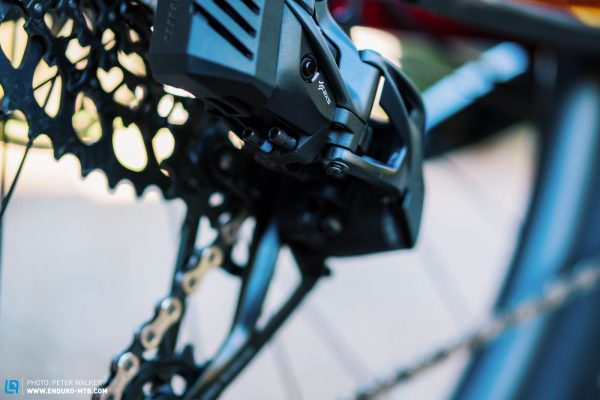

The new SRAM GX Eagle derailleur in detail
In addition to the upgrade kit, the new SRAM GX Eagle AXS derailleur is available separately for € 385, though this excludes the AXS battery (€ 55). Topping the scales at 462g, it’s only 10g heavier than its mechanical counterpart, despite the motor and Overload Clutch. The compact battery sits directly on the derailleur and provided us with around 20 hours of trail fun before needing to be recharged and recharging the battery doesn’t take more than an hour via the USB charger. The battery level is indicated via a small LED, or you can view it in the AXS app. All new – the protective cover was developed to fit all AXS derailleurs and is intended to protect the battery from flying stones and branches.
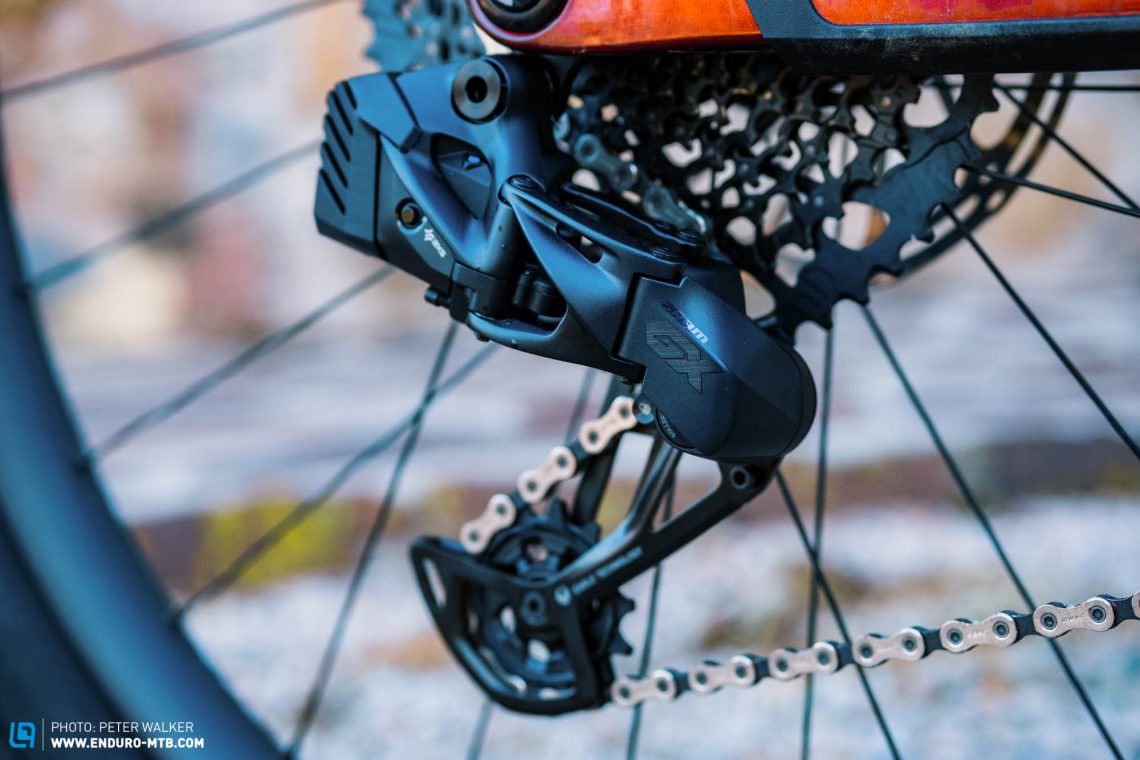
Yes, AXS means you will have to charge your rear derailleur, but you benefit from quick shifting, easy fitting and a tidy cockpit.
The new GX AXS derailleur features two clutch mechanisms. The Overload Clutch is like its life insurance. It allows the GX derailleur to move inwards in the event of an impact – when hitting the ground, a rock, or a tree. Shortly afterwards, the electric motor sets the rear derailleur precisely back to where it was.
As with all Eagle derailleurs, the new GX Eagle AXS also uses a roller bearing clutch to keep the chain tensioned. While it helps prevent chain slapping, the stiffness of the clutch can’t be adjusted, which is too bad since some bikes require more tension than others to keep the chain quiet. As it should be, the GX Eagle AXS derailleur is compatible with all Eagle cassettes. Regardless of whether it’s the 52 t or 50 t version.
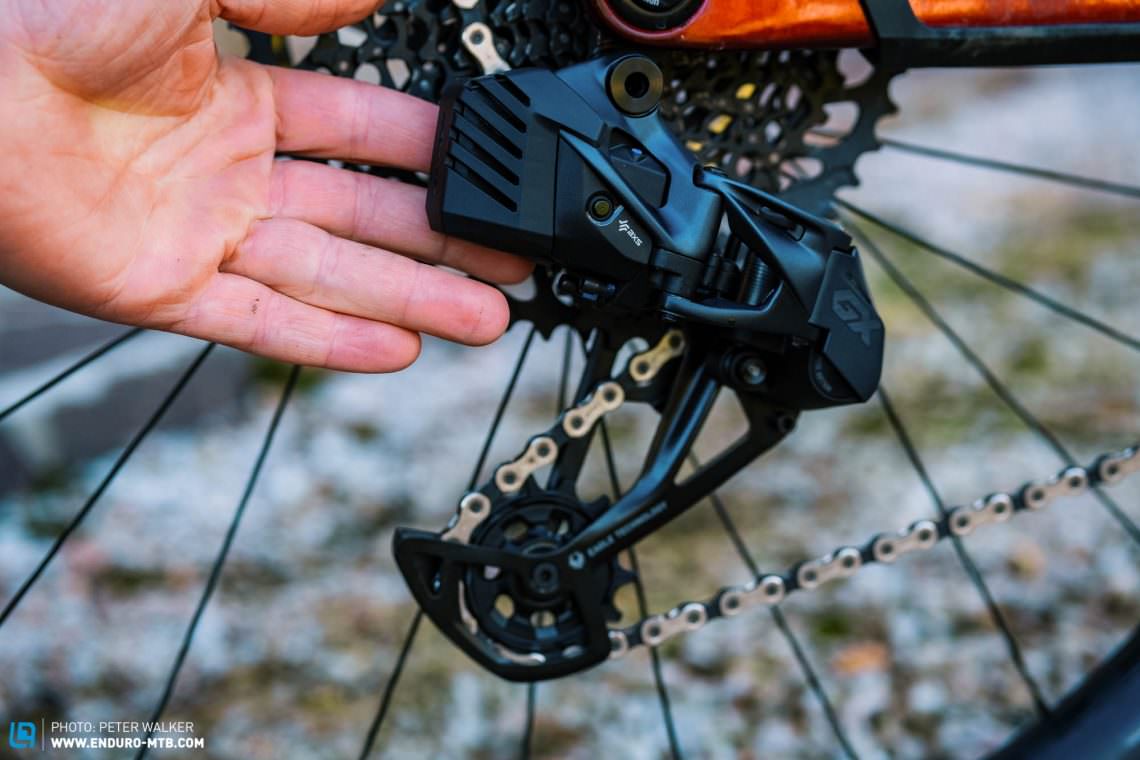
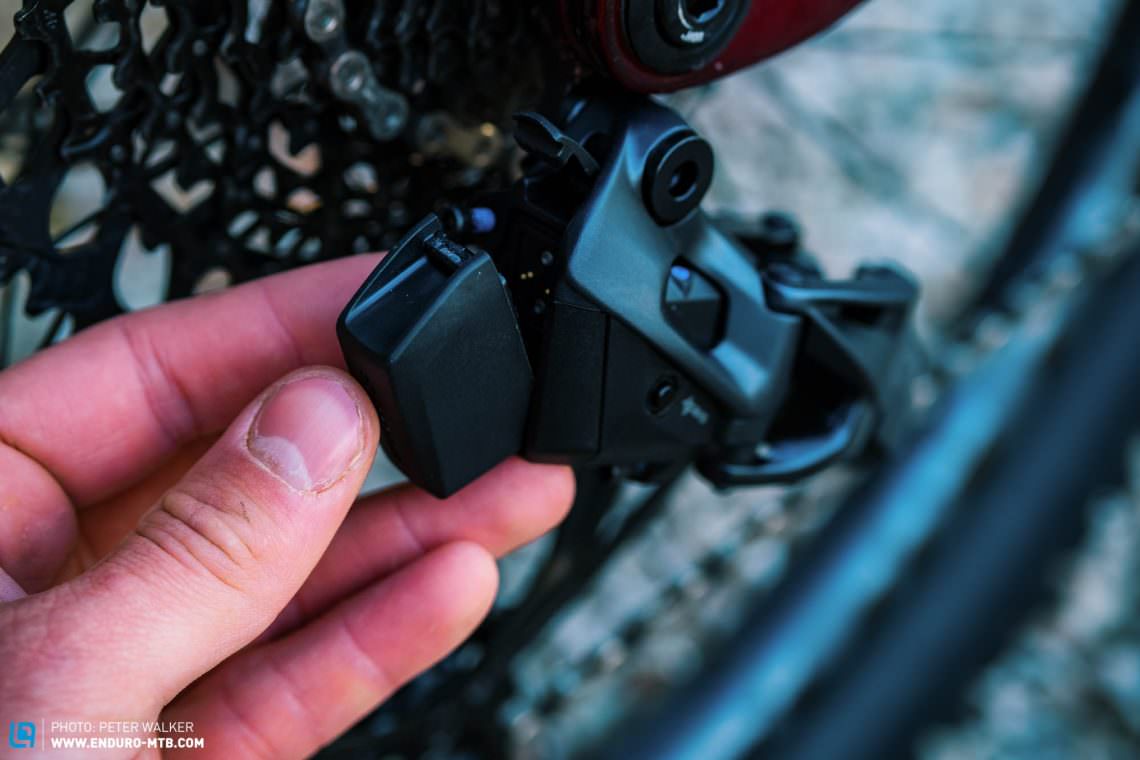
The new SRAM GX Eagle controller
The 77g SRAM AXS controller is available for € 155 and can be combined with all AXS components. It requires a button cell battery which is claimed to last for about 2 years. We’ve never had to replace the battery in any AXS controller on our test bikes and can confidently confirm this claim.
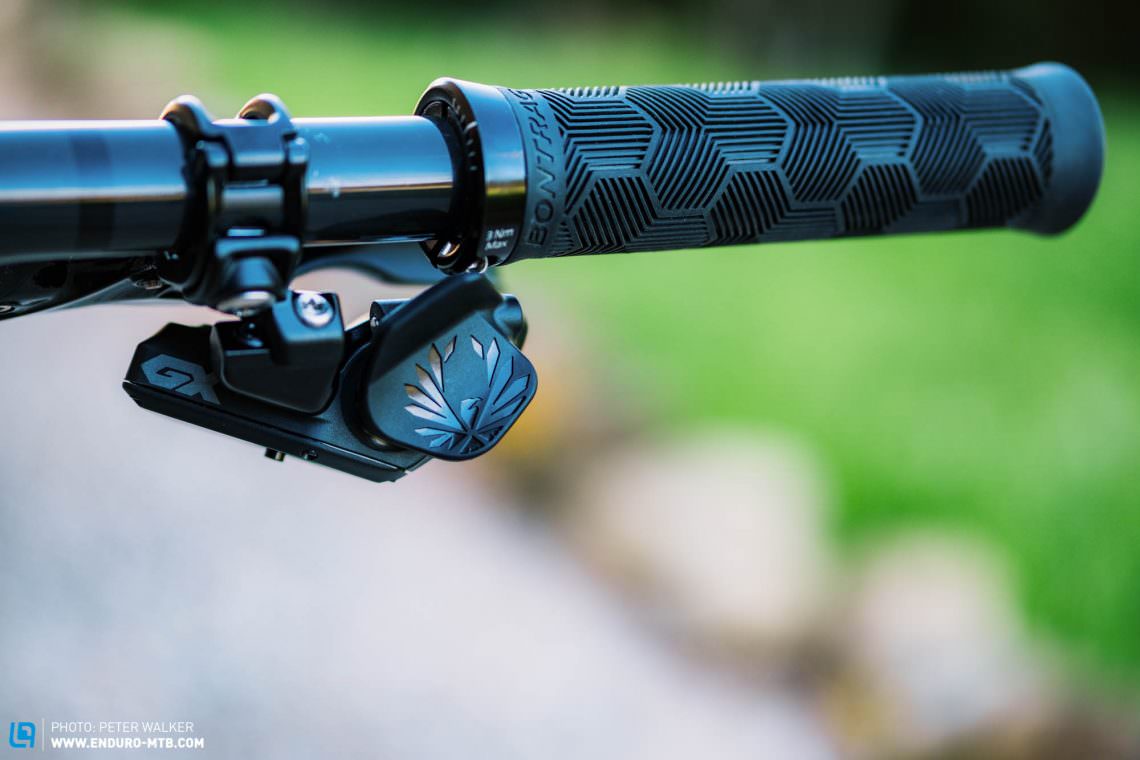
The controller offers a good compromise between ergonomics, simple function and haptic feedback when shifting. If you dislike the ergonomics of the controller, you can also use the AXS Rocker Paddle, which offers a completely different feel. The GX AXS controller can be easily mounted via SRAM’s Matchmaker clamp. As such, the shifter and the brake require a single clamp, keep your cockpit looking nice and tidy, especially now that you’ve gotten rid of the shifter cable. The functions of the paddle can be freely assigned in the AXS app and the controller is compatible with all AXS components. If you want, you could even also use it to operate your Reverb AXS dropper post.
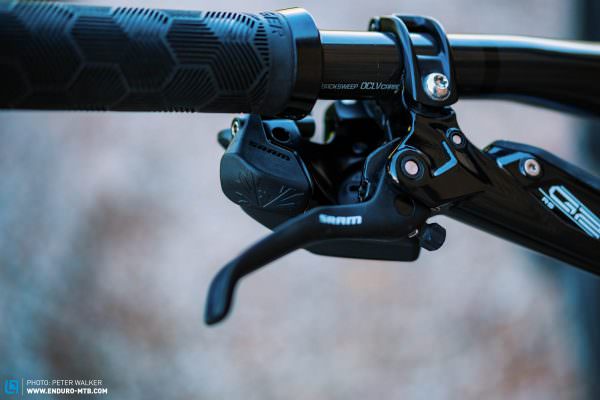
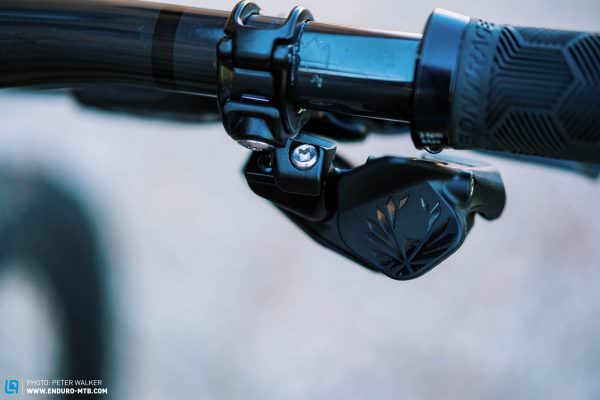
The SRAM GX Eagle components in detail
“Never change a winning team” is SRAM’s motto for the new GX AXS. While the cable between the derailleur and shifter has been cut and replaced by the AXS transmission standard, the remaining components remain unchanged.
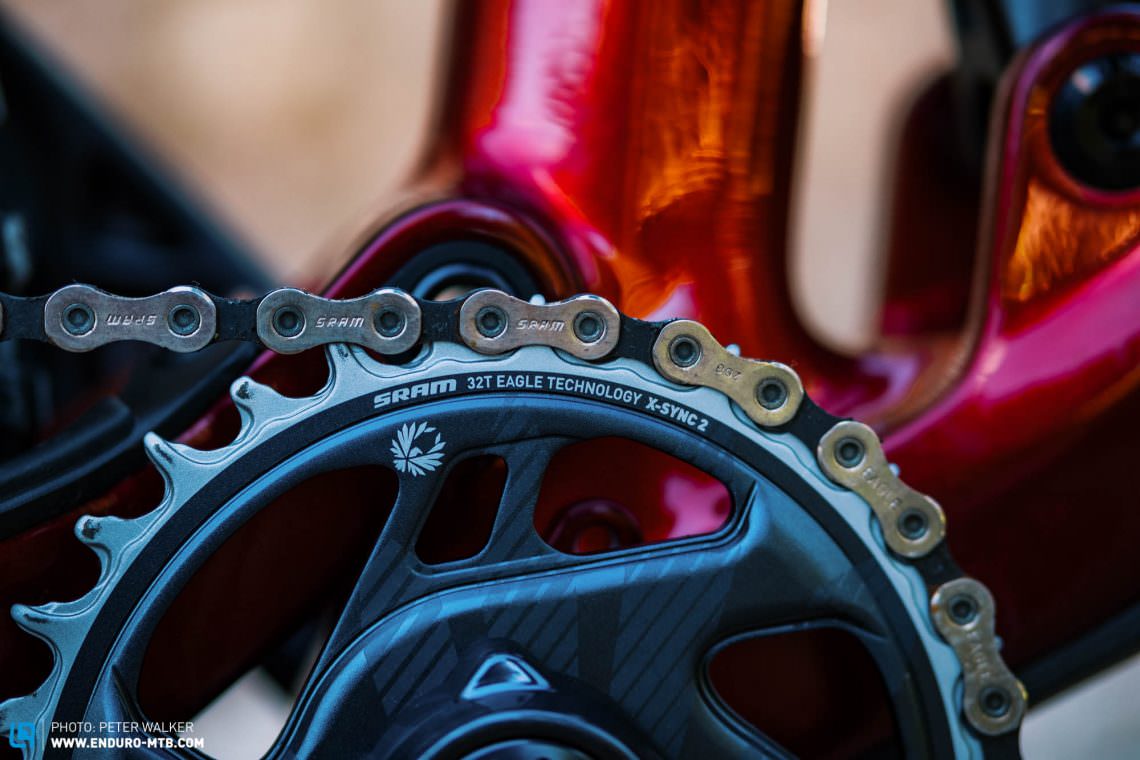
The teeth of SRAM Eagle X-SYNC 2 chainring are shaped in such a way to keep the chain securely in place. It is significantly lighter than a chainring with a spider and available with 30 to 38 teeth.
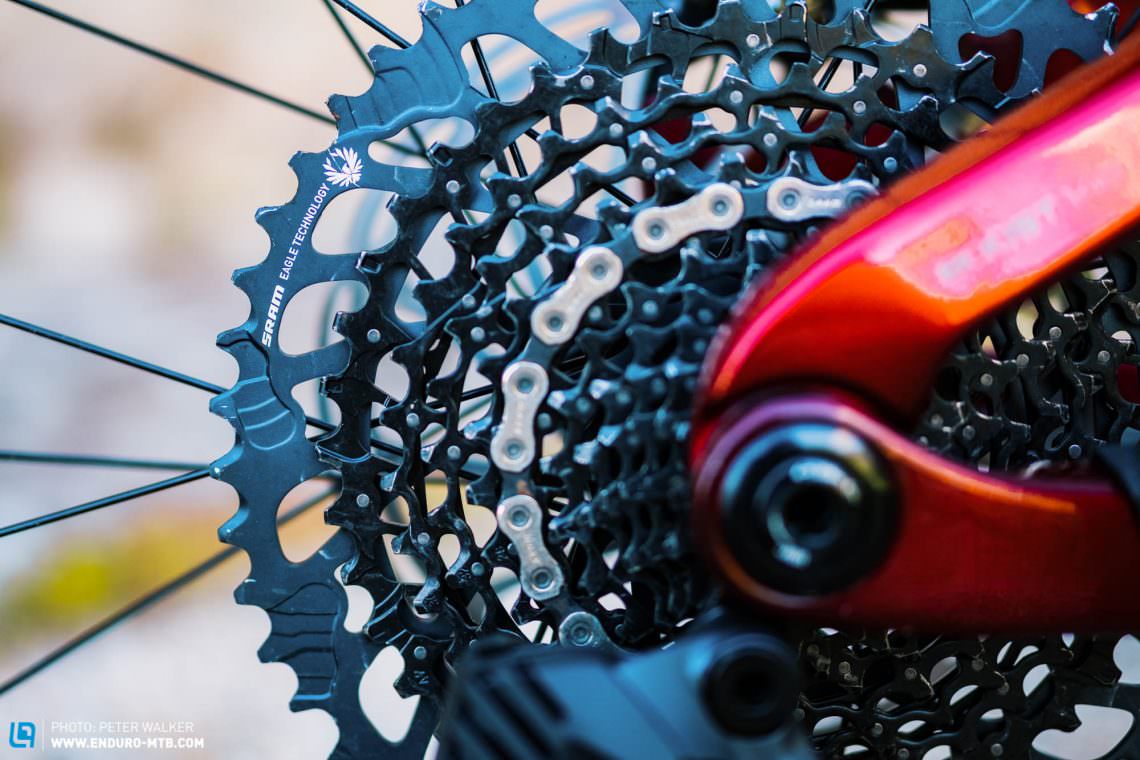
You can choose between the 10–50 t and the newer 10–52 t cassette, though the price and weight differ only minimally. We recommend going for the 10-52 t cassette as it offers a wider 520% gear range, so you can tackle even the steepest of climbs.
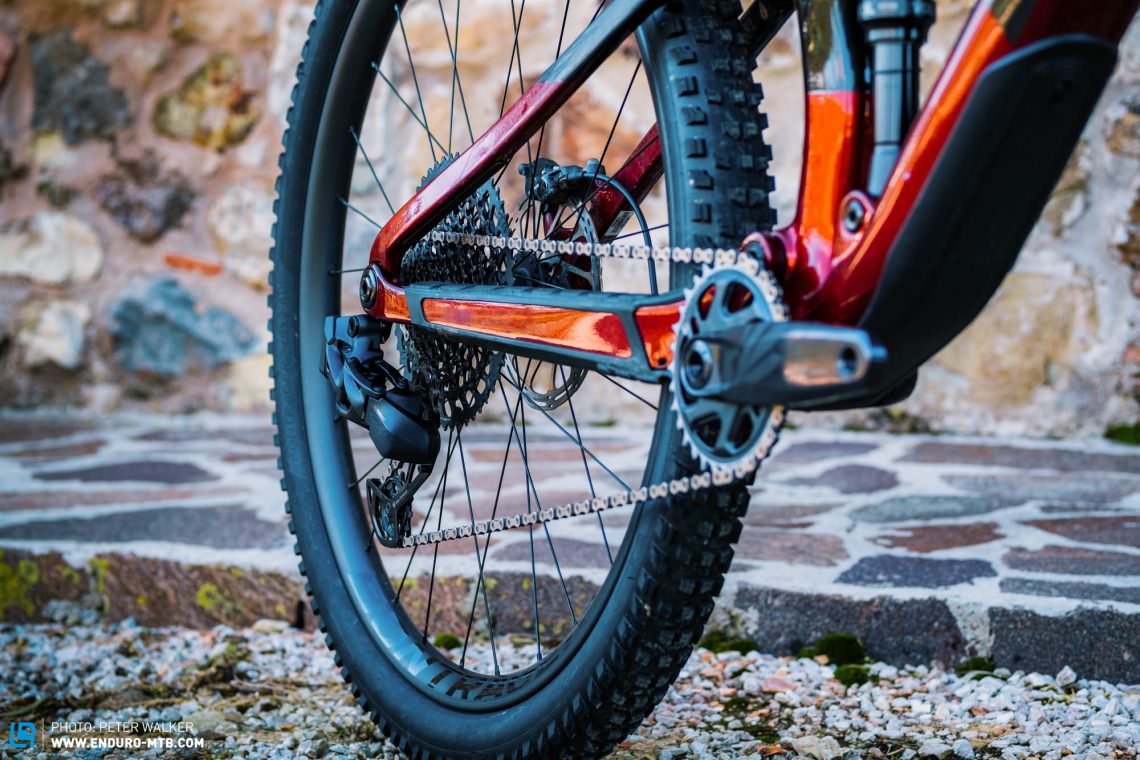
The SRAM GX crankset weighs 632g including the chainring and is available from € 150. If weight is an issue, the € 140 more expensive carbon version will save you 65 g.
Is the SRAM GX Eagle AXS the ultimate upgrade for your bike?
If your bike is fitted with a complete SRAM Eagle drivetrain and the rear derailleur isn’t shifting as crisp as it used too and in need of replacement anyway, the upgrade kit is just what you need. You can upgrade your mechanical drivetrain with the latest wireless technology in no time at all. The € 620 upgrade kit contains everything you need, except for a Friday afternoon off. This includes the derailleur, battery, controller and clamp, charging cable and the chain gap template. If your fitted cassette, chain, crankset and chainring are still in good condition, you can leave them on.
The upgrade makes the most sense for those who already have high-quality Eagle components installed on their bike, aren’t willing to spend their life’s savings on AXS XO1/XX1 AXS components and always wanted a wireless drivetrain. However, we wouldn’t advise upgrading a low-end NX or SX groupset to GX AXS as the weight-saving and performance improvement offered by a high-quality cassette and chain would add much more value than a wireless derailleur. Though you have to keep in mind that upgrading from an NX cassette also requires a different freehub body.
The following shows the differences between the conventional GX Eagle, the new GX AXS and the flagship X01 AXS components:
GX Eagle
Upgrade kit: € 165
Groupset: from € 567 | from 1,836 g
Derailleur: € 124 | 452 g
Trigger/Controller: € 41 | 122 g
Cassette (52T): € 220 | 451 g
Crankset incl. chainring: € 150 | 632 g
Carbon crankset incl. chainring: € 290 | 567 g
Chain: € 32 | 244 g
GX AXS
Upgrade kit: € 620
Groupset: from € 997 | from 1,801 g
Derailleur: € 385 ohne Akku, (+ € 55) | 462 g
Trigger/Controller: € 155 | 77 g
Cassette (52T): € 220 | 451 g
Crankset incl. chainring: € 150 | 632 g
Carbon crankset incl. chainring: € 290 | 567 g
Chain: € 32 | 244 g
X01 AXS
Upgrade kit: € 830
Groupset: 1,€ 944 | 1,546 g
Derailleur: € 750 | 387 g
Trigger/Controller: € 200 | 71 g
Cassette (52T): € 391 | 353 g
Crankset incl. chainring: € 538 | 471 g
Chain: € 65 | 264 g
How to upgrade to the new SRAM GX AXS
The wireless conversion of your Eagle drivetrain can be done in about 30 minutes with the help of the GX AXS upgrade kit. If you’ve got experience with installing a mechanical derailleur, the upgrade couldn’t be easier. Contrary to expectations, pairing and adjusting the derailleur only takes a few minutes and fitting it is a much simpler than with a conventional derailleur thanks to the lack of cables.
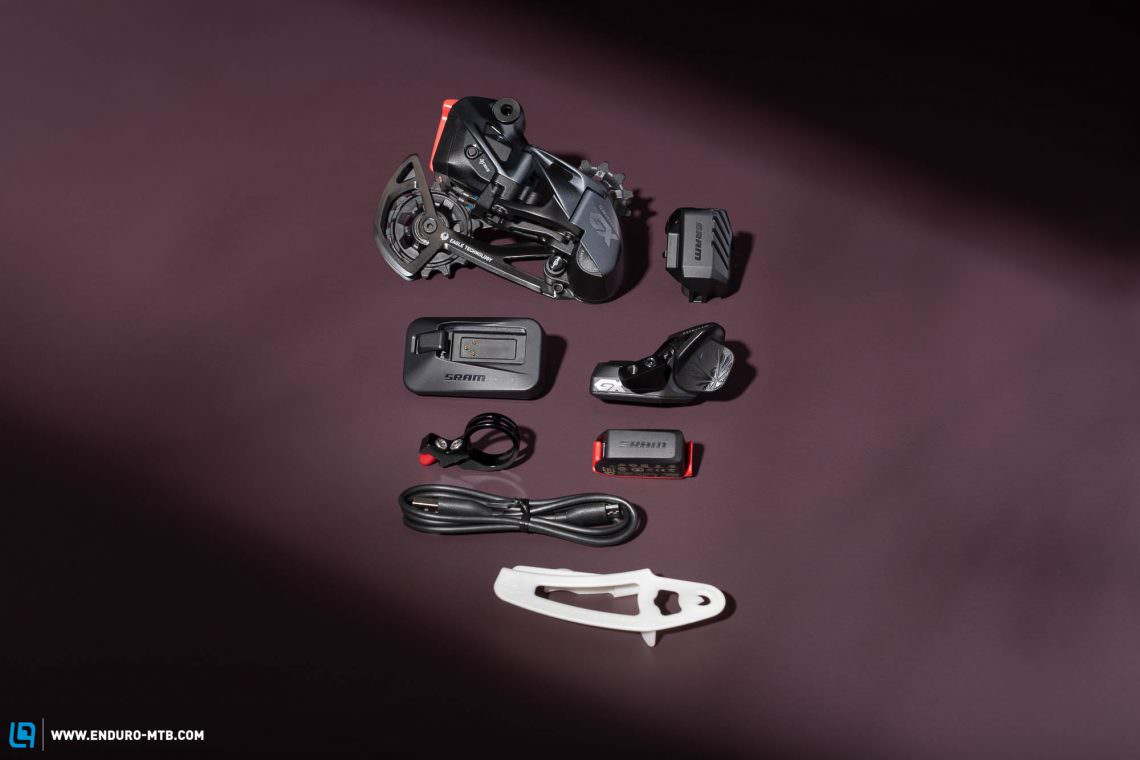
What you need:
- Upgrade kit
- Tools:
- 3 mm Allen key
- 5 mm Allen key
- T25
- Chain link pliers
- Side cutter
- A supply of cold beer ;)
Step 1 – Preparation
Wash your bike, have your tools ready, charge the AXS battery, put beer in the fridge!
Step 2 – Disassembly
First, you have to dismantle your current drivetrain and the best place to start is the chain, removing it and putting it aside. Next, remove the shifter cable. Now you can detach the shifter from the handlebar and remove the rear derailleur. Since the AXS drivetrain is wireless, you can go right ahead and pull the housing for the shifter cable out of the frame – no more rattling! If your bike came with plugs for the cable ports, we recommend using them to close up the holes. Otherwise, you could end up with dirt and water inside the frame. If you don’t have plugs, you can also resort to using a bit of deftly applied insulation tape.
Step 3 – Assembly
Before mounting the new components, insert the charged battery into the rear derailleur. To mount the hardware, start by attaching the controller to the handlebar – using a Matchmaker clamp if possible. If not, simply use the clamp that’s included with the kit.
Step 4 – Pairing and adjustment
Now you can pair the controller and the derailleur, which easier than pairing a cell phone with a Bluetooth speaker, guaranteed!
Press and hold the small button on the derailleur until it flashes, then repeat the same on the controller until it flashes quickly, done!
Step 5 – Mounting the derailleur
To mount the derailleur, shift it to the outermost position, grease the bolt and bolt it to the derailleur hanger.
Step 6 – Fitting the chain
To determine the chain length, the rear suspension has to be fully compressed, which you can do by letting the air of the shock or removing it completely. With the suspension compressed, seat the chain onto the chainring and the largest sprocket. To determine the correct length, tension the chain by hand until it overlaps. At the correct length, the chain should overlap by two links, one inner and one outer. Shorten if necessary. When you’re done, thread the chain through the derailleur, locked in the extended position, and onto the smallest sprocket, then join the chain with a Power Lock.
Step 7 – Setting the chain gap
To make setting the chain gap as easy as possible, SRAM include template. Simply shift into the penultimate gear and place the template on the largest sprocket. You might have to let some air out of the shock since the adjustment has to be done at sag. Alternatively, get someone to help you by sitting on the bike to keep it at sag while you make the necessary adjustments. Adjust the chain gap until the tip of arrow lines up with the centre of the jockey wheel.

Step 8 – Micro Adjust
The rear derailleur is factory-set to an Eagle cassette and so the limit screws rarely have to be adjusted. The process is the same as with a conventional rear derailleur. The Micro Adjust function makes it even easier and you no longer have to fiddle around with the limit screws. All it takes is switching to Micro Adjust via the controller, which will then perfectly align the jockey wheel with the positions of the sprockets.
Step 9 – App features
As already mentioned, the app allows you to set up additional features, such as customising the shifting sequence, limiting the gears, customising the assignment of the controller paddle and much more. However, this isn’t necessary. You could go out and hit the trail as is – ride on! P.S. don’t forget the beer ;)
The new GX AXS on the trail
The new SRAM GX Eagle AXS drivetrain takes a bit of getting used to. If you’ve only ever ridden with mechanical shifters, the unique shape and handling of the paddle on the GX AXS controller is a bit unusual at first. However, it doesn’t take long to get the hang of and once you do, shifting with the new GX AXS is intuitive, problem-free and damn quick. Compared to its mechanical counterpart, the electronic shifter requires less force and a shorter lever travel, allowing you to click through the gears at lightning speed. The derailleur responds to a push of the paddle with a short buzz as it shifts the chain to the correct sprocket at an unprecedented speed. In terms of shifting speed and precision, the GX Eagle AXS is superior to its mechanical counterpart and on par with the more expensive X01 and XX1 Eagle AXS groupsets. Only when shifting two or three gears at a time under full load will you hear the chain and cassette crunch as everything snaps into place. The Multishift function lets you shift several gears at once, which you’ll want to be careful with. We recommend setting Multishift to a maximum of three gears per shift in the app.
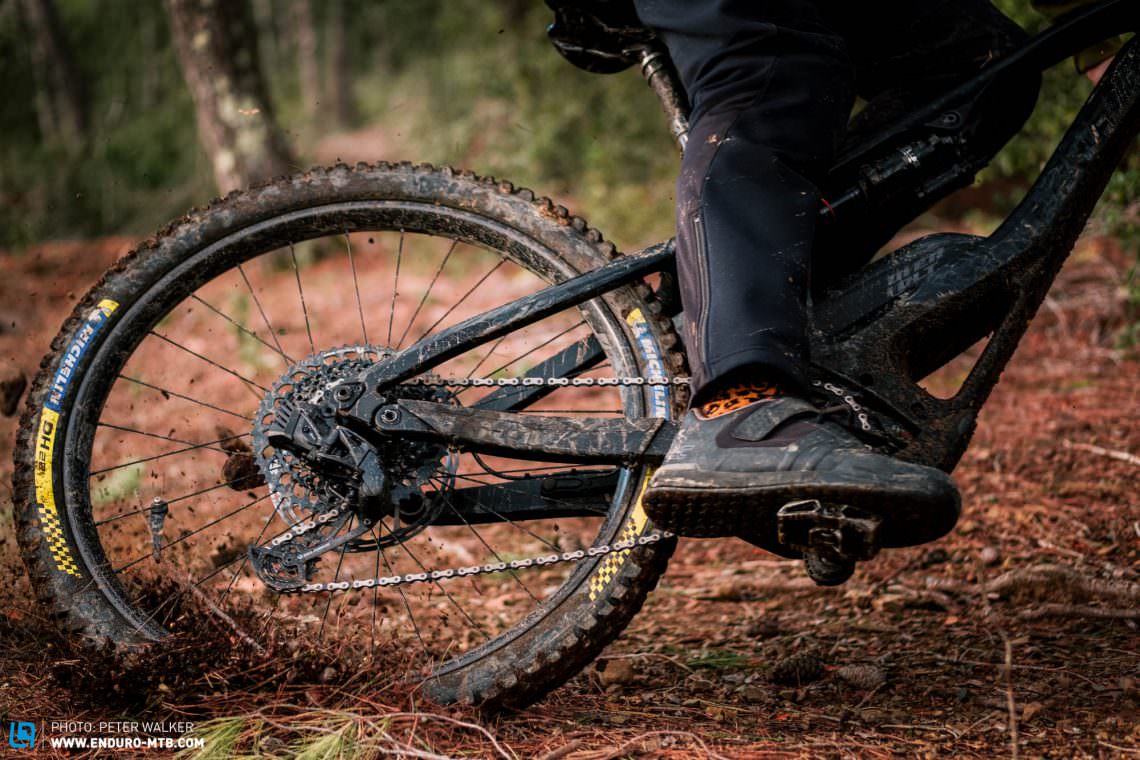
Shit happens: the derailleur is exposed to a number of dangers, especially on an enduro bike. During the test period, the new GX Eagle AXS derailleur regularly made acquaintance with rocks. Apart from a few cosmetic scratches, the function of the robust derailleur remained flawless thanks to the Overload Clutch. On the other hand, the roller bearing clutch isn’t as effective as we’d like it to be since it isn’t stiff enough.
Conclusion
AXS for the masses! With the brand new GX Eagle AXS, the shifting experts at SRAM are making their wireless technology a lot more accessible. The shifting performance is well above that of the mechanical GX and is on par with SRAM’s flagship AXS groupsets. The super clean look and cross compatibility with all existing Eagle components also speak for the € 620 upgrade. We’re curious to see which bikes will be the first come specced with the new GX Eagle AXS groupset.
For more information head to sram.com
Did you enjoy this article? If so, we would be stoked if you decide to support us with a monthly contribution. By becoming a supporter of ENDURO, you will help secure a sustainable future for high-quality mountain bike journalism. Click here to learn more.
Words: Nils Mai Photos: Peter Walker









